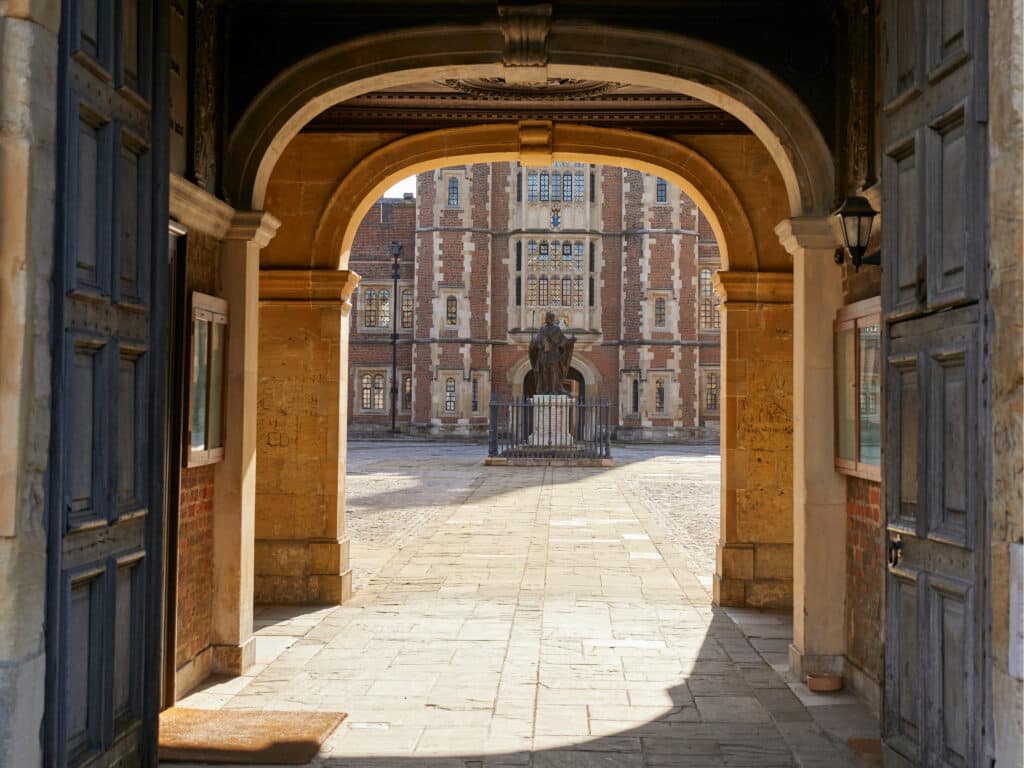Last month, four pupils set down their croquet balls in the McCrum Yard, ready to face off in the Inter-House Croquet final. Press Officer Charlie L was watching on to find out more about croquet at Eton for this week’s ‘Spotlight’ piece.
The match was somewhat uncharacteristic of the typical house final: one might expect large crowds and boisterous chanting but instead it was a scene of serenity. Only a couple of supporters arrived from the houses, and the game was calmly played to the noise of the nearby water fountain.
Don’t let this fool you into thinking that the game was uncompetitive, though. Both teams had fought several rounds to make it this far, and both showed no willingness to capitulate.
There were moments of brilliance from both sides, as the pupils of WING trailed behind the insurgent EJNR pair. One such moment was when Roland B managed to disperse both of the EJNR balls in one turn and set up his teammate brilliantly, only for his partner to miss his opportunity for greatness!
So how is croquet played? Games consist of two pairs working together to get their balls through the hoops and eventually to hit the post at the centre. The twist is that if your ball hits another one, you get to pick up your ball, place it flush with the one you hit and then smack the two balls wherever you wish (this shot is called a croquet) and then take another shot after that.
Through this mechanism of interference any game can turn on its head in one shot. All it takes is an untimely miss perhaps, or a croquet at the post (meaning a player has to return to the start and loses their progress) that can make or break any game, no matter how one-sided it may appear. This is why it has such an allure, I believe. Croquet rewards skill, but the lucky player will always prevail.
Pupils at Eton have access to practice lawns, of varying quality it must be admitted. My house, particularly, has an uneven terrain which means you have to account for where the ground may slope leading the ball to roll unforgivingly in the wrong direction, though I won’t complain since it makes the matches much more interesting! I have, and this is no exaggeration, played matches lasting around two hours in my house, as a result of people being reset and reset again.
Indeed there are also nuances in the rules played in each house. Our games are played in our housemaster’s garden, which finds benches and tables scattered around the course. You are not, by our rules, allowed to move any furniture so a well-placed shot into the legs of a bench can prove deadly. In Waynflete house, one may not play a shot through a hoop, while in ours it is perfectly legal. Pupils have slightly adapted rules based on the conditions of play in their house, often to maximise drama and raise the stakes.
Croquet is mostly played for leisure but there are often in-house competitions, as well as the aforementioned inter-house croquet competition. Many merely find it a fun way to pass the time on a summer afternoon with friends.
For the most part it is calm and pleasant, but when a game-making shot is in progress, one shouldn’t be surprised to hear screams of delight and horror at the sudden reverse of fortune…



